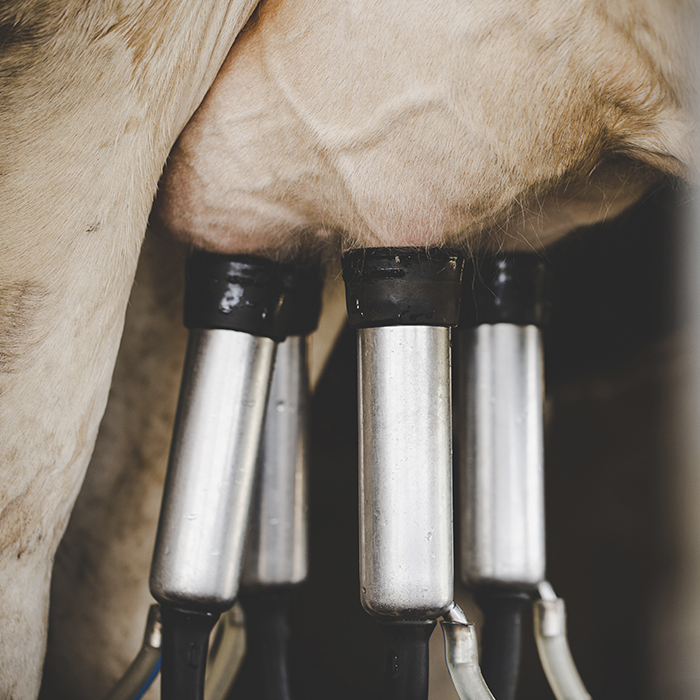- Start cows with a successful dry period.
Research shows that nutrition and dry period management affect health and performance after birth. Therefore, evaluate your dry cow program if you are not satisfied with the performance of your dairy cows. Key objectives for dry cows include: maintaining dry matter intake (12.5 to 14.5 pounds per day), avoiding excessive energy supply, preventing body condition score (BCS) gain, optimizing comfort, and caring hoof health. - Prevent subclinical milk fever.
Reduce the risk of subclinical milk fever (low blood calcium) during the first week of lactation. Low blood calcium (less than 8.0 milligrams deciliter) correlates with the following: ketosis, higher somatic cell count, delayed uterine involution, metritis, drop in food consumption. - Optimize feed intake immediately after calving: provide adequate amounts of clean water to cows, allow access to a new total mixed ration, provide adequate amounts of roughage, and keep troughs clean and fresh.
- Optimize cow comfort.
To optimize cow comfort in the post-calving cow group: use a stocking rate of 80 to 85% of capacity, keep cows in a just-calving group for 14 to 21 days, provide sufficient trough space for per cow, reduce social stress (especially for first-calving heifers), ensure cows do not become separated from their herd mates, and invest in cow cooling for dry and lactating cows. - Take care of rumen health and prevent rumen acidosis.
Provide roughage during the first five days after birth. The diet in early lactation should contain plenty of good quality digestible fiber (31 to 35% of neutral detergent fiber), maintain fiber size for consistent intake and avoid empty troughs and minimize the risk of slow consumption or diet selection which may result in rumen acidosis.
Adapted content.
MilkPoint.




